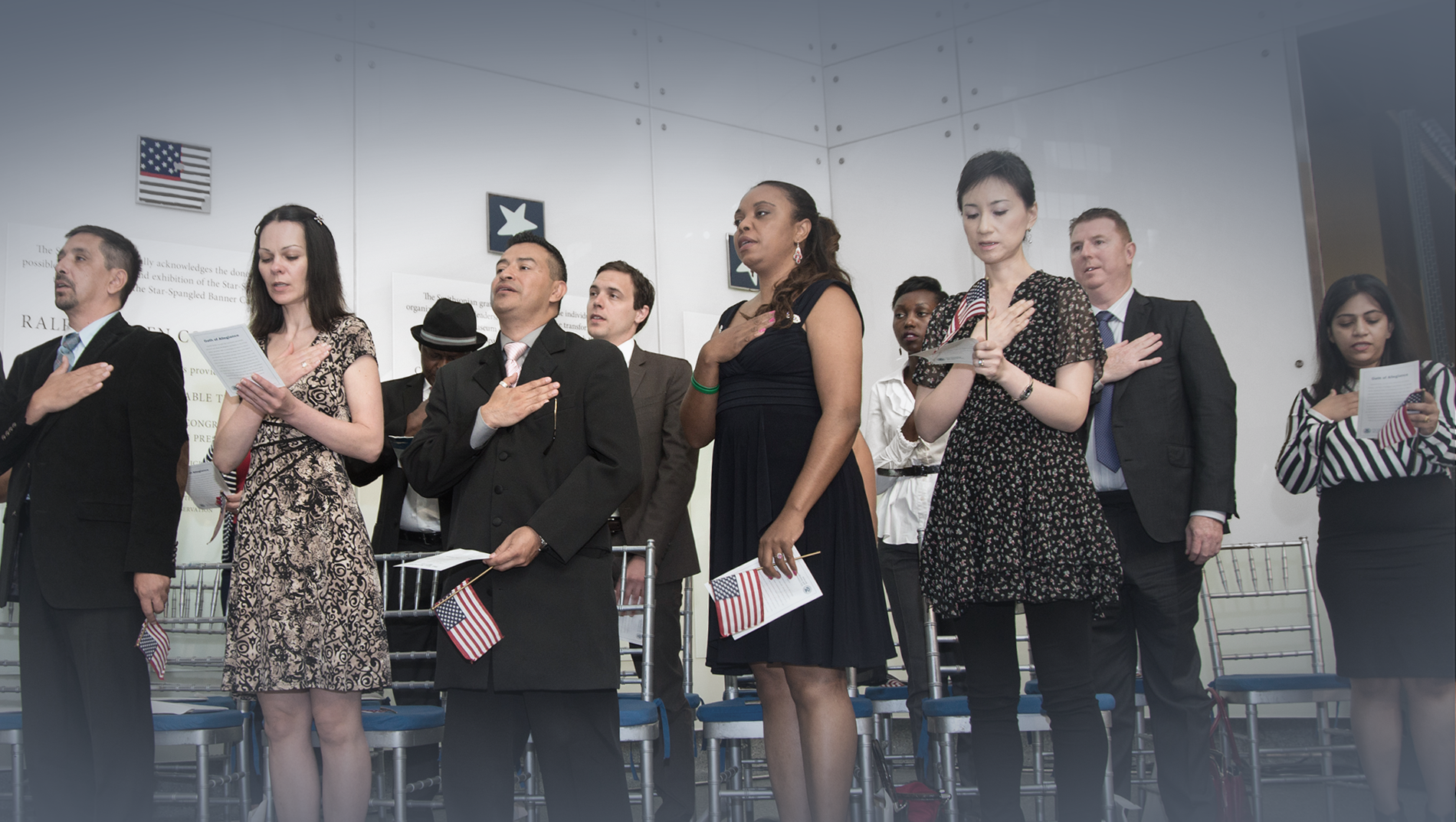Immigration 101
The U.S. immigration system is complex and can be difficult to understand. These resources provide key data points, historical information, and background on hot topics in immigration. Learn the basics about immigration. Immigration in the United States is complex and ever-evolving. Start here to understand the fundamental aspects of immigration policy, its history, and its impact on both individuals and the country at large. Learn commonly used terms about immigration law and how the U.S. immigration system is designed. Explore layered topics like how and whether immigrants can become citizens, as well as what individual protections look like under the law.
How the United States Immigration System Works
- How the Immigration System Works
- June 24, 2024
U.S. immigration law is very complex, and there is much confusion as to how it works. This fact sheet provides basic information…
Read More
Birthright Citizenship in the United States
- Birthright Citizenship
- October 16, 2024
This fact sheet explains birthright citizenship, the Fourteenth Amendment, and its interpretations. Who is…
Read More
Asylum in the United States
- Asylum
- August 27, 2014
Asylum seekers must navigate a difficult and complex process that can involve multiple government…
Read More
Diversity and Transformation: African Americans and African Immigration to the United States
Successive generations of African immigration have continuously transformed the African American community and the sociopolitical climate of the United States. Read More

Remembering December 17: Repeal of the 1882 Chinese Exclusion Act
December 17 marks the anniversary of the 1943 repeal by Congress of the Chinese Exclusion Act of May 6, 1882. With only a few exceptions, this law barred any Chinese from immigrating to the United States, and was the first time U.S. immigration policy singled out citizens of a particular nation for wholesale discrimination. Read More

Power and Potential: The Growing Electoral Clout of New Citizens
Immigrants – and groups in which immigrants are a large percentage of the population, such as Latinos and Asian/Pacific Islanders (APIs) – are a growing portion of the U.S. electorate. In a closely contested presidential race, the growing ranks of “new citizens” – foreign-born individuals who become “naturalized” U.S. citizens – are increasingly important political players. Read More

The McCarran-Walter Act: A Contradictory Legacy on Race, Quotas, and Ideology
The McCarran-Walter Act of 1952 ended the blanket exclusion of immigrants based on race and created the foundation for current immigration law, but imposed a racialized immigration quota system and new ideological grounds for exclusion. Read More

“Eating Bitterness”: The Impact of Asian-Pacific Migration on U.S. Immigration Policy
Asian-Pacific migration to the United States has had a positive impact on immigration and refugee law by contributing to the demise of exclusion acts against non-whites and of the nationality-based quota system. ( Read More

The Lessons of 9/11: A Failure of Intelligence, Not Immigration Law
In the hours following the deadly terrorist attacks of September 11, 2001, the United States government took the extraordinary step of sealing U.S. borders to traffic and trade by grounding all aircraft flying into or out of the country and imposing a lock-down on the networks of transportation and commerce that are the lifeblood of our economy and society. Given the uncertainty over what might happen next, these emergency procedures were a necessary and appropriate short-term response to the attacks. Read More

Minority Newcomers: Fair Comparisons of Immigrants and the Native Born
Comparisons of the mostly “minority” foreign-born and mostly “white” native-born populations that fail to account for the socioeconomic impact of ethnicity incorrectly suggest that place of birth, rather than minority status, is the primary factor explaining disparities between immigrants and natives. However, a more accurate – and fair – comparison of immigrants and natives within the same ethnic group suggests otherwise. Read More

Migrating to Recovery: The Role of Immigration in Urban Renewal
Policymakers in states from Iowa to Utah and in cities from Albuquerque to Boston have realized that immigration is a key source of long-term economic vitality, particularly in urban areas experiencing population loss, shrinking labor pools and growing numbers of retirees. Immigration, if properly cultivated, can be a key ingredient in urban economic development and recovery. Read More

U.S. Soldiers from Around the World: Immigrants Fight for an Adopted Homeland
As American troops, including many immigrants, are now engaged in military action in Iraq, the Immigration Policy Center has updated its fact sheet about the role and participation of immigrants in the U.S. Armed Forces. Read More

Have We Learned the Lessons of History? World War II Japanese Internment and Today’s Secret Detentions
In the aftermath of the horrific events of September 11, 2001, our leaders have begun exercising extraordinary powers to ensure our collective safety, sacrificing the personal liberties of some, particularly immigrants, in the process. Read More
Make a contribution
Make a direct impact on the lives of immigrants.

